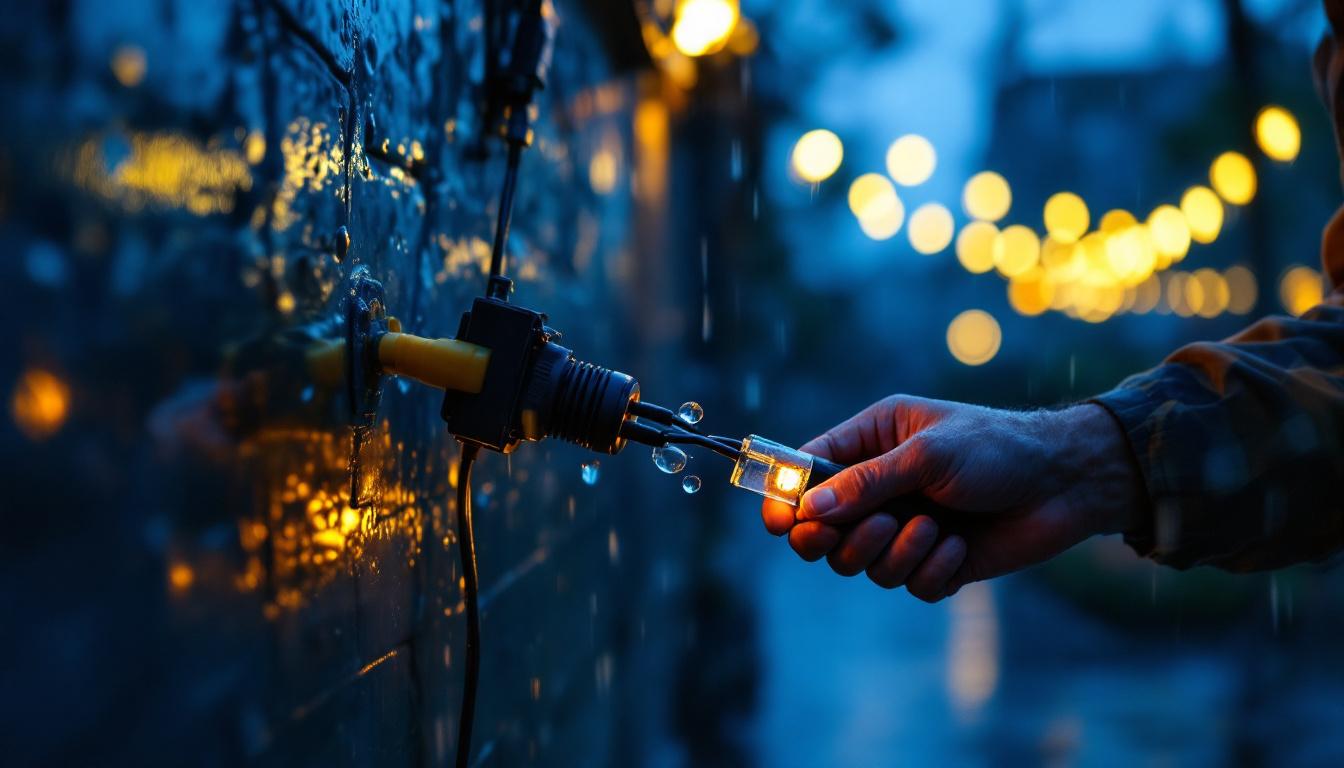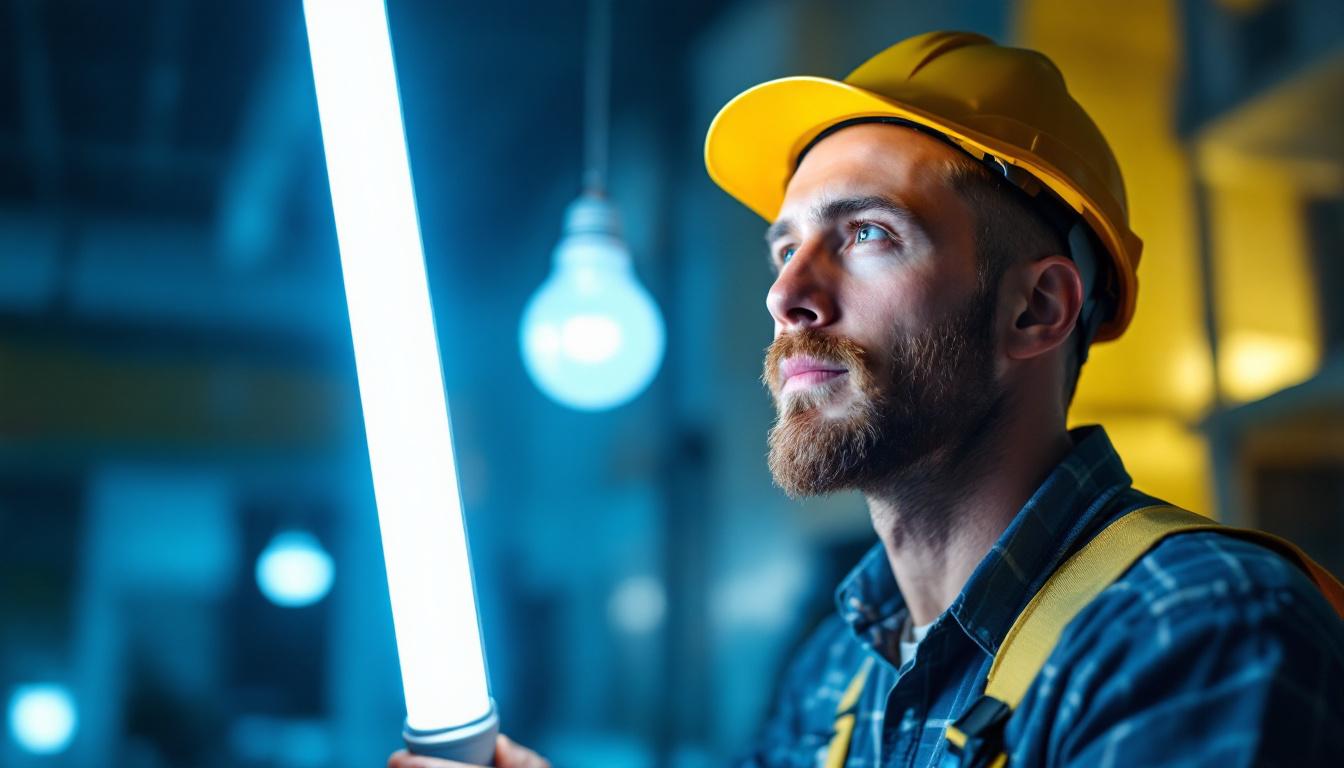
Lighting contractors face numerous challenges when it comes to ensuring the reliability and longevity of their installations. One critical aspect that often gets overlooked is the choice of low voltage wire connectors, especially when it comes to waterproof options. This article delves into the importance of waterproof connectors, the potential issues that can arise from neglecting this detail, and best practices for selecting and using these essential components.
Waterproof connectors are essential in any outdoor lighting installation. They serve as the first line of defense against moisture, which can cause corrosion, short circuits, and ultimately lead to system failures. By utilizing waterproof connectors, lighting contractors can enhance the durability of their installations and reduce the need for frequent repairs.
Moisture can infiltrate electrical connections in various ways, including rain, humidity, and even condensation. When water seeps into connectors, it can lead to rust and corrosion, which compromise the integrity of the connection. This not only affects the performance of the lighting system but can also pose safety hazards.
Moreover, compromised connections can lead to intermittent failures, where lights flicker or turn off unexpectedly. Such issues can frustrate clients and damage a contractor’s reputation. Therefore, using waterproof connectors is not just a recommendation but a necessity for ensuring reliable performance.
There are several types of waterproof connectors available on the market, each designed for specific applications. Common types include sealed connectors, heat-shrink connectors, and gel-filled connectors. Sealed connectors often feature rubber gaskets that prevent moisture ingress, while heat-shrink connectors use a heat-activated adhesive to create a watertight seal. Gel-filled connectors, on the other hand, contain a silicone gel that provides excellent moisture resistance.
Choosing the right type of connector depends on the specific requirements of the lighting installation, including environmental conditions and the type of wiring used. Understanding these options allows contractors to make informed decisions that enhance the longevity and reliability of their projects.
In addition to the types of connectors, it’s also important to consider the ratings and certifications that indicate their effectiveness in waterproofing. Many connectors come with IP (Ingress Protection) ratings, which specify their level of protection against dust and moisture. For example, an IP67 rating signifies that the connector is completely dust-tight and can withstand immersion in water up to 1 meter for a limited time. This level of assurance is crucial for contractors who want to guarantee the performance of their installations in various weather conditions.
Furthermore, the installation process itself can impact the effectiveness of waterproof connectors. Proper techniques, such as ensuring that all connections are clean and free from debris before sealing, can significantly enhance the performance of these connectors. Additionally, regular maintenance checks can help identify any early signs of wear or damage, allowing for timely interventions that can prevent larger issues down the line. By prioritizing both the selection and installation of waterproof connectors, contractors can ensure that their outdoor lighting systems remain functional and safe for years to come.
While waterproof connectors are designed to mitigate moisture-related issues, several other challenges can arise if they are not used correctly. Understanding these common pitfalls can help lighting contractors avoid costly mistakes.
One of the most significant issues with low voltage connectors is improper installation. Even the best waterproof connectors can fail if not installed correctly. For instance, if connectors are not fully seated or if wires are not stripped to the appropriate length, it can lead to poor connections that are susceptible to moisture ingress.
Additionally, using the wrong tools or techniques can damage the connectors, compromising their waterproof capabilities. It is essential for contractors to follow manufacturer guidelines and best practices when installing these components to ensure optimal performance. Regular training and refreshers on installation techniques can also be beneficial for contractors, as it helps them stay updated on the latest practices and technologies in the field. Moreover, investing in quality tools specifically designed for low voltage applications can significantly reduce the risk of installation errors and enhance the longevity of the connections.
Not all connectors are compatible with every type of wire. Using connectors that are not designed for specific wire gauges or insulation types can lead to failures. For example, a connector designed for thicker wire may not provide a secure fit for thinner wire, leading to increased resistance and potential overheating.
Contractors must ensure that the connectors they choose are compatible with the wiring used in their installations. This attention to detail can prevent issues down the line and enhance the overall reliability of the lighting system. Furthermore, it is crucial to consider the environmental conditions where the wiring will be installed. For instance, outdoor installations may require connectors that can withstand UV exposure, while installations in damp areas may need additional moisture resistance. By carefully selecting connectors that match both the wire specifications and the environmental conditions, contractors can create a more robust and dependable lighting system that minimizes maintenance and repair needs over time.
Choosing the right waterproof connectors is crucial for any lighting contractor. Here are some best practices to consider when selecting connectors for outdoor lighting projects.
Before selecting connectors, it is essential to assess the environmental conditions in which the lighting system will operate. Factors such as exposure to rain, humidity levels, and temperature fluctuations can all impact the performance of connectors. For instance, areas with high humidity may require connectors with superior moisture resistance, while regions prone to extreme temperatures may benefit from connectors designed to withstand thermal expansion and contraction.
By evaluating these conditions, contractors can choose connectors that are specifically designed to handle the challenges posed by the environment, ensuring long-term reliability.
The specific application of the lighting system also plays a significant role in connector selection. For example, landscape lighting may require connectors that can withstand direct exposure to soil and water, while decorative lighting in a covered patio may have different requirements. Understanding the unique demands of each application allows contractors to select connectors that will perform optimally in their intended use.
Additionally, considering factors such as the number of connections and the overall complexity of the installation can help in choosing connectors that simplify the wiring process while maintaining waterproof integrity.
Once the appropriate waterproof connectors have been selected, proper installation is key to ensuring their effectiveness. Here are some tips to help contractors achieve optimal results during installation.
Each type of waterproof connector comes with specific installation instructions provided by the manufacturer. Following these guidelines is critical for achieving a secure and waterproof connection. This includes recommendations for wire stripping lengths, crimping techniques, and any additional sealing methods that may be required.
Neglecting to follow these guidelines can lead to improper connections that may fail over time. Therefore, taking the time to read and understand the manufacturer’s instructions can save contractors from future headaches.
Using the correct tools for installation is essential for achieving reliable connections. For instance, crimping tools should be appropriate for the size and type of connector being used. Additionally, heat-shrink connectors require a heat source that can evenly distribute heat without damaging the connector or wire.
Investing in quality tools not only enhances the installation process but also ensures that connectors are installed correctly, reducing the risk of future failures.
Even with the best waterproof connectors, regular maintenance and inspection are vital to ensure long-term performance. Lighting contractors should implement a routine inspection schedule to identify any potential issues before they escalate.
Establishing a regular inspection schedule allows contractors to monitor the condition of connectors and identify any signs of wear or damage. This includes checking for corrosion, loose connections, or any signs of moisture ingress. Regular inspections can help catch issues early, allowing for timely repairs and replacements.
Additionally, inspections should be conducted after severe weather events, as heavy rain or storms can impact the integrity of outdoor installations. Being proactive in maintenance can significantly extend the lifespan of the lighting system.
Cleaning connectors and surrounding areas can also contribute to their longevity. Removing dirt, debris, and other contaminants can prevent moisture retention and corrosion. However, it is essential to use appropriate cleaning methods that do not damage the connectors or compromise their waterproof capabilities.
For instance, using a soft brush or cloth to gently clean connectors can help maintain their condition without causing harm. Additionally, applying a protective coating designed for electrical connections can further enhance moisture resistance.
Low voltage wire connectors are a critical component in outdoor lighting installations, and selecting waterproof options is essential for ensuring reliability and longevity. By understanding the importance of these connectors, recognizing common issues, and following best practices for selection and installation, lighting contractors can avoid potential pitfalls and deliver high-quality installations.
Moreover, regular maintenance and inspections can further enhance the performance of waterproof connectors, ensuring that lighting systems remain functional and safe for years to come. In an industry where reputation is paramount, investing in quality connectors and adhering to best practices can set contractors apart and lead to satisfied clients.
Ready to elevate the quality of your outdoor lighting installations? Look no further than LumenWholesale for your waterproof low voltage wire connectors. Our spec-grade lighting products are designed to meet the highest industry standards, ensuring that your projects shine with reliability and durability. With unbeatable wholesale prices and the convenience of free shipping on bulk orders, LumenWholesale is your go-to source for superior lighting without the inflated markups. Don’t compromise on quality or value—discover the best wholesale lighting deals today and give your clients the excellence they deserve.

Discover why lighting contractors should prioritize solar lamps for indoor use.

Illuminate your expertise with our comprehensive guide on LED solar garden lights.

Discover the impact of classroom lighting on learning environments with our comprehensive guide for lighting contractors.

Discover how a 4 foot fluorescent bulb impacts lighting contractors’ projects, offering energy efficiency, cost savings, and improved illumination—boost your expertise today!.